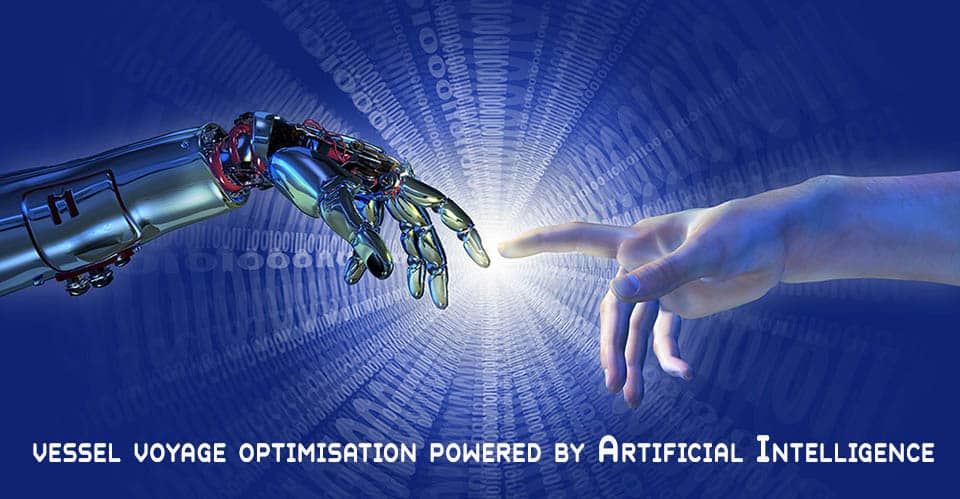
Bruk ytelsesruting med kunstig intelligens (KI) for å umiddelbart akselerere flåtens dekarboniseringsbane og redusere drivstoffkostnadene. Ytelsesruting vil ha en stor, kvantifiserbar innvirkning på flåtens drivstofforbruk og CII i dag, med resultater med stor innvirkning fra dag én.
"DeepSea Vessel Voyage Optimalisering AI-løsning reduserer utslipp, det reduserer drivstofforbruket og det øker sikkerheten under drift. Det er en vinn-vinn-situasjon i alle aspekter av seiling"
Geir Fagerheim (SVP Marine Operations) Wallenius Wilhelmsen
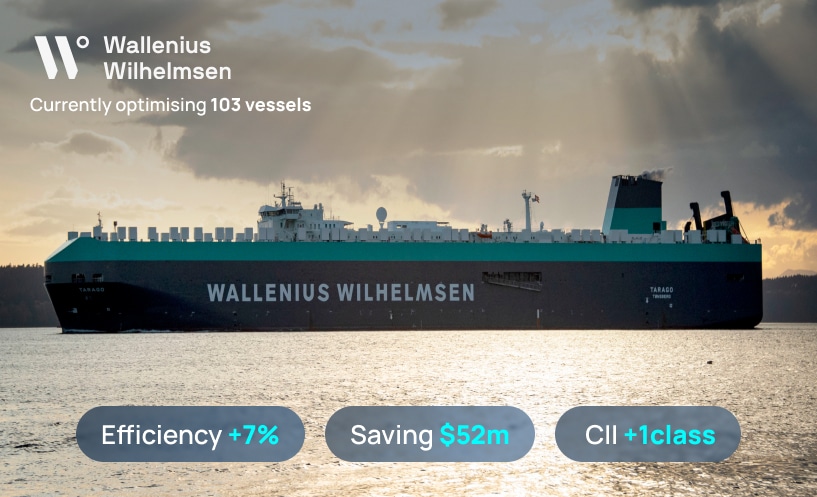
Optimalisering av fartøysreiser for dekarbonisering – AI-løsning:
DeepSea utnytter den nyeste AI-teknologien for å gjøre skip mer effektive. DeepSea, som samler eksperter fra teknologi og maritim sektor, fokuserer på øke effektiviteten og reduserer drivstofforbruket til fartøyene gjennom en kombinasjon av teknisk og operasjonell innsikt drevet av detaljerte AI-genererte ytelsesmodeller. Ytelsesfartøyruting for det 21. århundre.
Vi samarbeider med fremtidsrettede rederier for å gjøre skipsfartsbransjen mer slank, grønn og bedre tilkoblet.

DeepSea samarbeider med fremtidsrettede rederier innen maritim shipping for å gjøre den maritime skipsfartsindustrien mer slank, grønn og bedre tilkoblet. Ble grunnlagt i 2017 for å bringe det beste innen kunstig intelligens (KI) til skipsfartsindustrien, og er skipsfartens fremste AI-teamet, drevet av det mest avanserte AI-teamet i bransjen. Med en kultur preget av aktiv forskning, bidrar de med akademiske artikler til konferanser globalt, driver internasjonale initiativer innen AI og bringer alle disse fremskrittene til sine effektivitetsøkende produkter.
DeepSea – AI for skipsfartsindustrien
For å kontinuerlig kunne tilby en AI-drevet og optimalisert fartøysreise, henter DeepSea data fra fartøyet ditt og (med AI) lager en nøyaktig fartøysmodell i skyen, som oppdateres live for å nøyaktig samsvare med fartøyets tilstand og hjelpe deg med å drive mer effektive fartøy og mer effektive reiser, skreddersydd planlagte reiser for hvert fartøy.
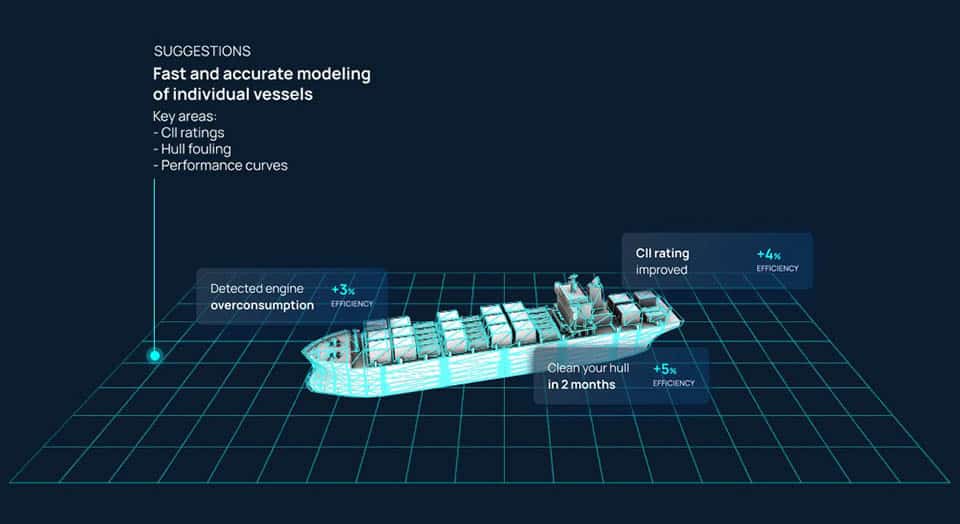
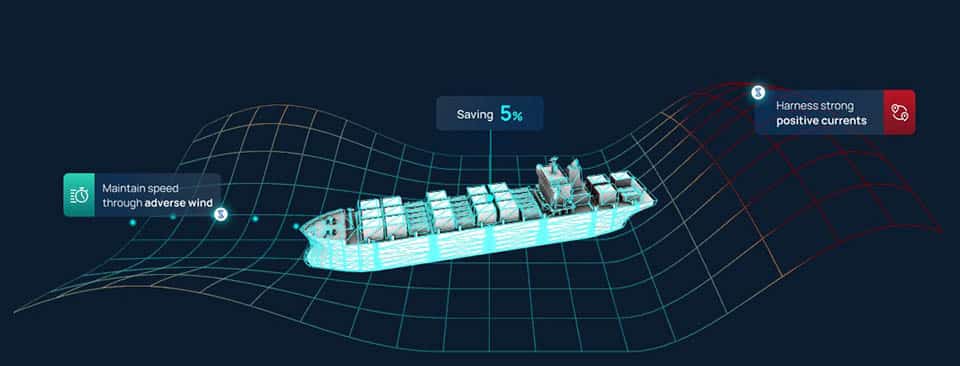
DEEPSEA Pythia – Ytelsesfartøyruting for det 21. århundre
Verdens første værrutingsplattform skreddersydd for fartøyets eksakte ytelse, under alle værforhold. Kraftige AI-modeller forstår nøyaktig hvordan fartøyet ditt yter under alle vær- og begroingsforhold.

DeepSeas plattform er nå på plass i mer enn 20 fartøyflåter og gir nøyaktig personlige anbefalinger for hastighet og fartøyrute for hvert skip, basert på dyplæringsmodeller som er trent til å forutsi hvert skips energiforbruk under alle mulige forhold.
«Ingen mennesker, uansett hvor mange års erfaring de har, kan konkurrere med disse automatiserte instruksjonene. De reduserer utslipp, drivstofforbruk og øker driftssikkerheten.»
«Det er en vinn-vinn-situasjon i alle aspekter av skipsfart.»
Geir Fagerheim, SVP Marine Operations i Wallenius Wilhelmsen Shipping Company
Wallenius Wilhelmsen, kjent som en leder innen introduksjon av ny teknologi og praksis i den maritime industrien, blir det første globale rederiet som tar i bruk en fullstendig AI-basert tilnærming for å optimalisere skipsreiser på tvers av hele flåten på mer enn 120 Ro-Ro-skip.
Wallenius Wilhelmsen, verdens største bilrederi, gjennomførte en grundig 18-måneders prøveperiode med DeepSeas programvare for å komme i mål med denne avtalen. «Dette er et vendepunkt for den meningsfulle og velprøvde implementeringen av kunstig intelligens (KI) innen skipsfart», sa DeepSeas president Roberto Cuestas (DeepSea). «Det finnes nå mange løsninger på markedet som hevder å spare drivstoff, redusere utslipp og oppfylle miljøforskrifter – og de fleste av dem er bare tomme løfter. Det er vanskelig for rederier å skille mellom hva som er ekte og hva som bare er markedsføring. Dette partnerskapet er nok et godkjenningsstempel for vår teknologi og tilnærming, fra et av de mest avanserte selskapene i bransjen.» Den 18 måneder lange prøveperioden ga en fullstendig validert ytelsesforbedring på 7% i en delmengde av Wallenius Wilhelmsens flåte, og når prosjektet er fullført på tvers av hele flåten, forventes dette tallet å øke til 10%. Dette tilsvarer mer enn 75 000 tonn spart drivstoff og 240 000 tonn ikke-utslipp av karbondioksid (C02) – og vil dramatisk hjelpe skip med å overholde nye utslippsforskrifter i bransjen. Wallenius Wilhelmsen har satt ambisiøse mål om å redusere utslippene med 27,5% innen 2030. «Halvparten av denne reduksjonen bør komme fra eksisterende skip. Vi jobber flittig med å finne miljøvennlige løsninger for vår eksisterende flåte. Målet vårt er å implementere denne innovative reiseoptimaliseringsløsningen for økt fartøyeffektivitet på tvers av hele flåten vår», sa Geir Fagerheim, SVP Marine Operations hos Wallenius Wilhelmsen.
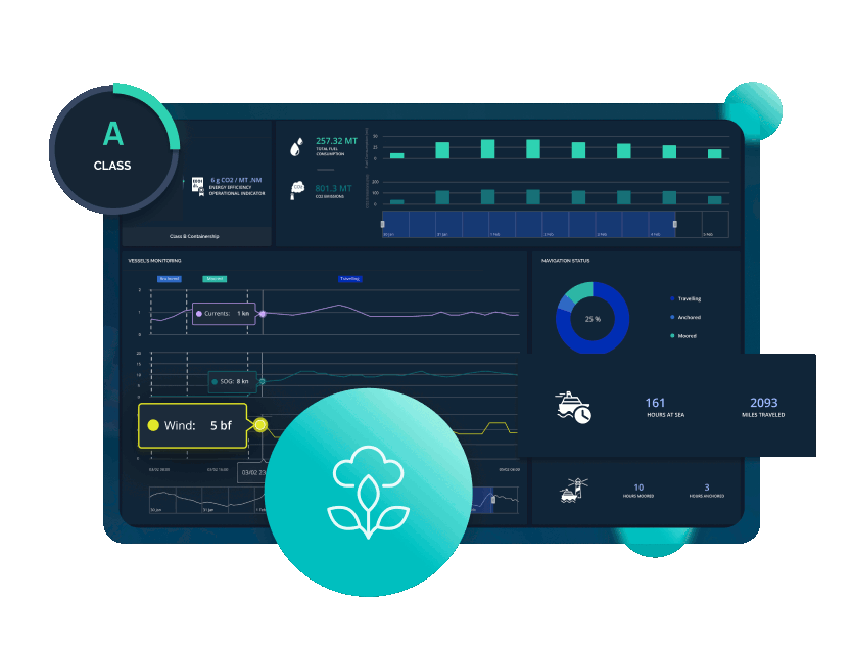
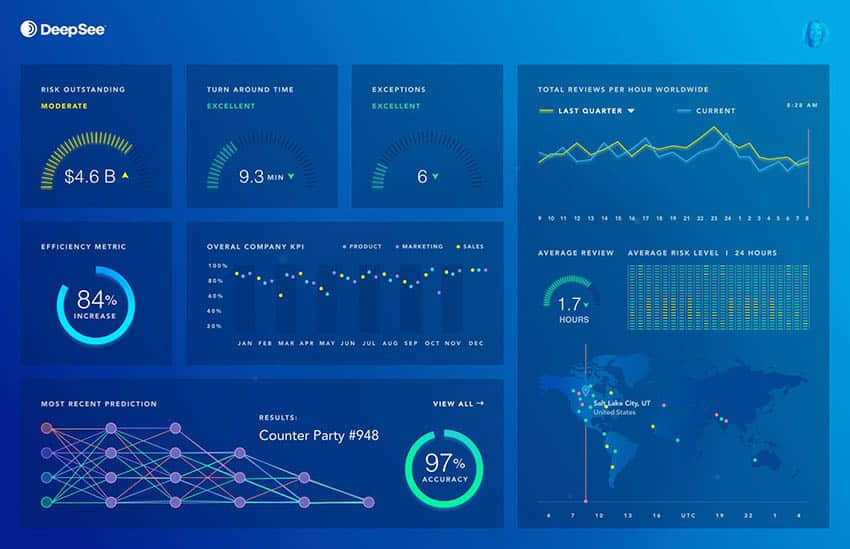
- - -
Kundene til det greske selskapet DeepSea AI, som inkluderer rederier fra Singapore, Norge, Japan osv., kan, gjennom DeepSeas teknologi, spare 8%-12% i drivstoff og redusere sitt miljøavtrykk. Veien for utvikling av autonome skip, der ruten deres "bestemmes" ikke av skipskapteinen, men av en algoritme, åpnes ved oppkjøpet av DeepSea Technologies grunnlagt av Konstantinos Kyriakopoulos og Roberto Kousta, av den japanske multinasjonale Nabtesco, notert på børsen i Tokyo.
«Teknologien vi har utviklet i så mange år gikk i denne retningen. Nå har vi den rette partneren, som lar oss realisere dette målet, ettersom vi ikke hadde et maskinvaresystem. Med kombinasjonen av teknologiene våre kan vi også konvertere eksisterende skip til autonome skip, samt installere systemene våre på nye skip», sier Kyriakopoulos, om målet med Nabtescos oppkjøp av DeepSea. DeepSea har utviklet en kunstig intelligens-plattform som, gjennom innsamling – i sanntid – av data om ytelsen til kommersielle skip (tankskip, containere) under navigasjon, lager modeller for å optimalisere ytelsen (drivstoffbesparelse, reduksjon av karbonutslipp) med tanke på værforhold, egenskapene til det respektive skipet osv.
Teknologien brukes på over 300 skip. «Med denne kunstige intelligensmodellen hjelper vi i hovedsak kapteinen med å nå destinasjonen sin med minst mulig miljøforurensning og best mulig ytelse», forklarer Koustas. Det er her DeepSea og Nabtescos systemer «smeltes sammen», og de vil kunne automatisere «kommandoene» som gis til skipet av DeepSea (f.eks. skipets optimale hastighet basert på værforholdene). «Skipets autonomi vil være basert på best mulig kontroll over hver bevegelse for å spare enda mer drivstoff», sier Kyriakopoulos.
Ifølge selskapet kan kundene, som inkluderer rederier fra Singapore, Norge, Japan osv., bruke DeepSeas teknologi til å spare 8%-12% i drivstoff og redusere sitt miljøavtrykkSistnevnte anses som avgjørende, ettersom innføring av en karbonavgift på skipsfart diskuteres, og EU legger press på skipsfartssektoren.
DeepSeas team, som består av 90 personer – 80% er lokalisert i Hellas – forventes å øke til 110 i neste periode, mens Athen blir omdannet til et kunstig intelligens-senter for det japanske selskapets aktiviteter. Disse er ikke begrenset til skipsfartsindustrien, men strekker seg til jernbaneautomatisering, luftfart, vindturbiner osv. «Med Nabtescos investering vil teknologier rundt det vi kaller industriell kunstig intelligens (industriell AI) bli utviklet i Hellas», sier Kyriakopoulos. «Vi har en langsiktig handlingsplan for å implementere det vi ønsker innen autonomi og kunstig intelligens».
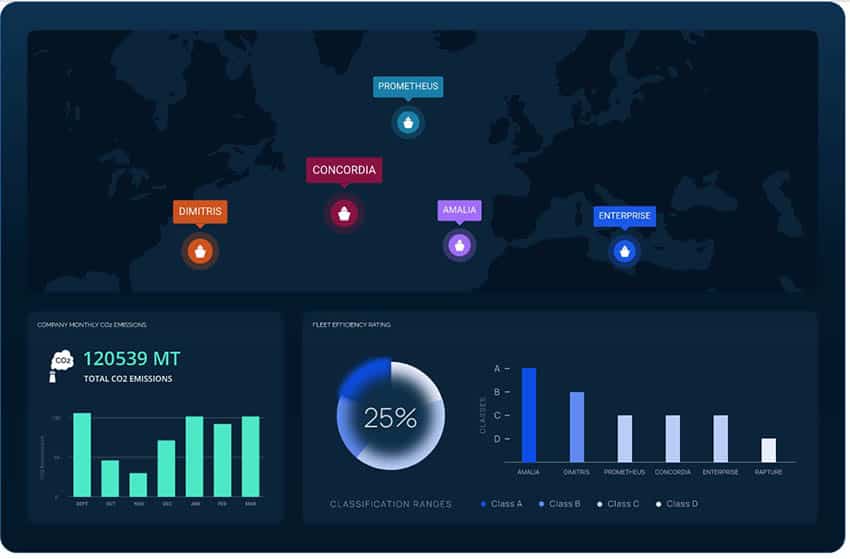
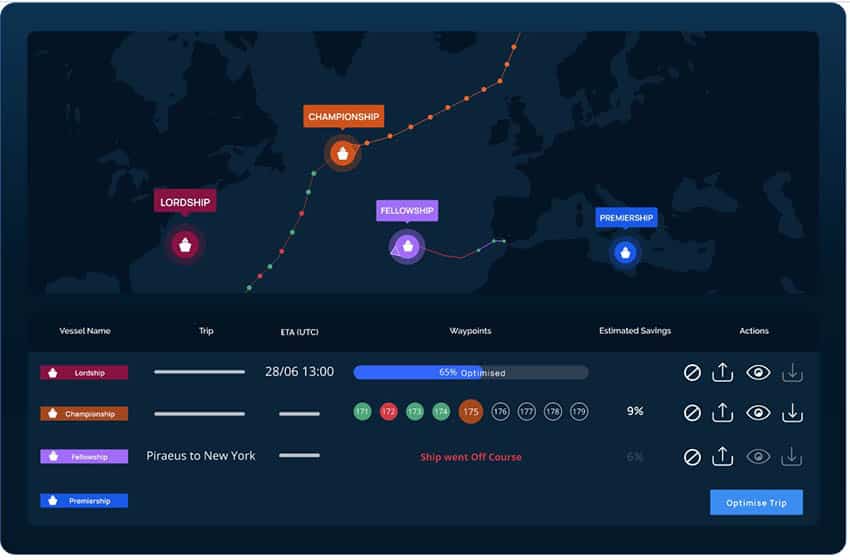
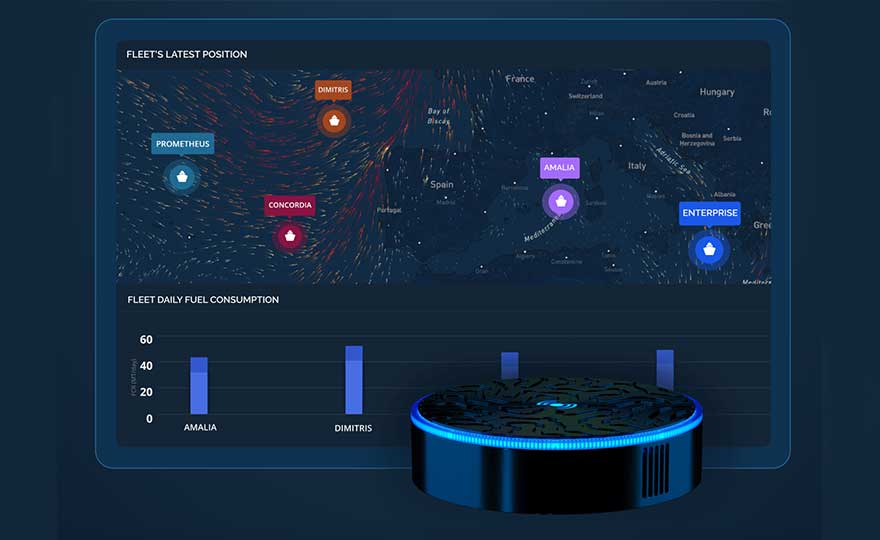
(7. september 2022) Wallenius Wilhelmsen ble det første globale rederiet som tok i bruk en fullstendig AI-basert tilnærming til reiseoptimalisering på tvers av hele flåten på 120+ skip.
Wallenius Wilhelmsen rederiet rullet ut DeepSeas Programvare for ytelsesruting, som leverer fartøyspesifikke rute- og fartsplaner, i siste kvartal av 2022 og 2023. Wallenius Wilhelmsen, et av de mest fremtidsrettede selskapene innen maritim skipsfart, har satt ambisiøse mål om å redusere utslippene med 27,5 prosent innen 2030. Dette arbeidet med DeepSea er et viktig skritt mot å nå disse målene.
Geir Fagerheim, SVP Marine Operations i Wallenius Wilhelmsen, sier:
«Ingen mennesker, uansett hvor mange års erfaring de har, kan konkurrere med disse automatiserte seilingsinstruksjonene. Det reduserer utslipp, det reduserer drivstofforbruket og det øker sikkerheten under drift. Det er en vinn-vinn-situasjon i alle aspekter av seiling.»
Denne milepælsbeslutningen, den første i sitt slag globalt, ble ikke tatt raskt – men fulgte etter 18 måneder med grundig trinnvis testing.
Tallene som til slutt kom ut av denne omfattende prøveperioden er betydelige:
En forbedring i fartøyeffektivitet på 6,9% og en forventet reduksjon i utslipp på over 170 000 tonn på tvers av flåten.
Det er imidlertid like viktig å fokusere på de viktigste lærdommene som kom frem i den 18 måneder lange perioden med intenst samarbeid som førte til dette partnerskapet.
Den 13. oktober holdt Wallenius Wilhelmsen og DeepSea et virtuelt webinar der de diskuterte denne valideringsperioden på nett, og sammen diskuterte de viktigste lærdommene sine for dekarbonisering med optimalisering av fartøyenes reise.Reiseoptimalisering for dekarbonisering - nettbasert webinar).
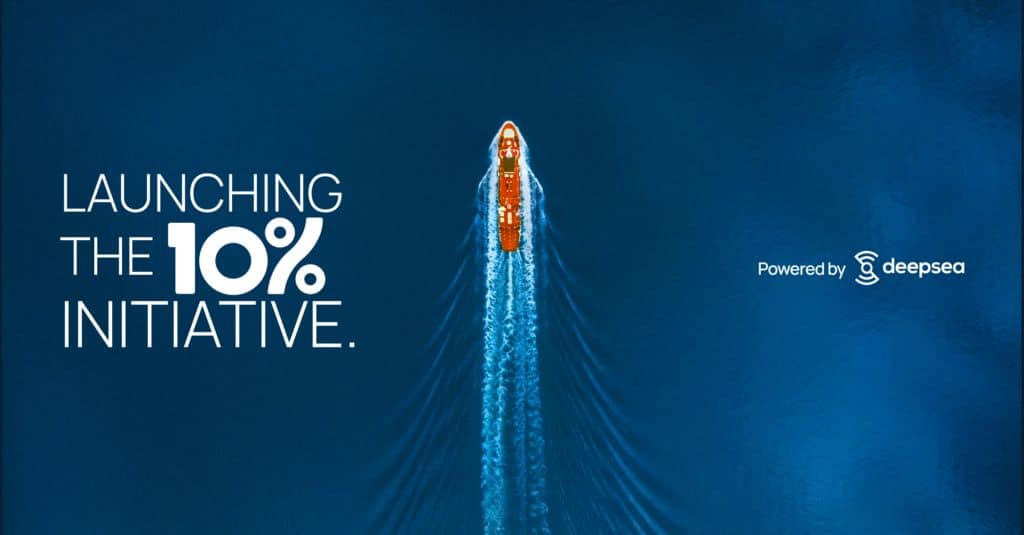
Hva er 10%-initiativet? En bevegelse for å redusere energikostnadene for maritime fartøy med 10%. Tilnærmingen er velprøvd, kostnadseffektiv og kan oppnås innen 12 måneder. 10%-initiativet er en forpliktelse fra DeepSea og medlemmene (EUROSEAS Ltd, EuroDRY Ltd, ETF Partners, Nabtesco) av initiativet om å samarbeide for å gjøre noe reelt, målbart og effektfullt – med konkrete fordeler for alle.
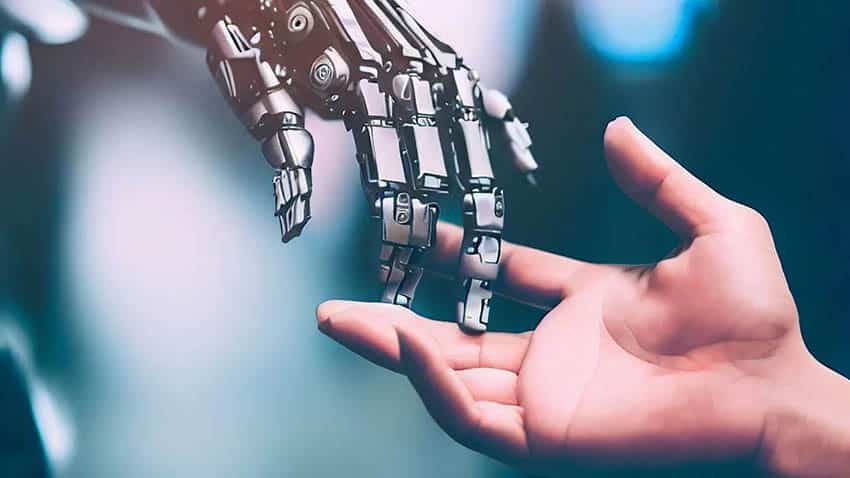
Når det gjelder reiseoptimalisering – å velge den beste kursen og hastigheten for reisen – har ikke skipets kapteiner verktøyene til å ta informerte beslutninger, forklarer Fagerheim fra rederiet Wallenius Wilhelmsen (lasteskip). Det er derfor de går hardt og raskt frem i starten av reisen, fordi de ikke kan forutsi senere forhold. Det er her AI-drevne reiseoptimaliseringsplattformer kommer inn i bildet.
Adopsjonen av AI-løsninger i den maritime industrien er i en spedbarnsfase, men kunstig intelligens har et enormt potensial til å frigjøre verdi i å optimalisere flåtens effektivitet. AI-teknologi for reiseoptimalisering fokuserer primært på å redusere fartøyenes drivstofforbruk, noe som resulterer i reduksjon av CO2-utslipp og driftskostnader. Lloyd's Registers Maritime Performance Services har utviklet bred erfaring med bruk av AI for fartøyoptimalisering og bidrar til å forbedre fartøyenes ytelse. Tradisjonell og eldre dataanalyse ser bare på 10% med fartøydata, mens AI-modeller nå kan se på nærmere 100% med fartøydata og behandle disse dataene umiddelbart for å skape ekstremt nøyaktig innsikt i fartøyets ytelse rundt drivstofforbruk, hastighet, trim, skrogbegroing og strømforbruk,» (Andy McKeran, direktør for Maritime Performance Services, Lloyd's Register). Utgiftene til AI kunstig intelligens-løsninger i den maritime skipsfartsindustrien forventes å mer enn dobles i løpet av de neste fem årene til 142,7 milliarder TP3 innen 2027, en sammensatt årlig vekstrate på 23%.
Maskinlæring: Den neste maritime grensen?
Ettersom tilgjengeligheten av data for høyytelsesdatabehandling øker i takt med bruken av automatisering, mener Wärtsilä Voyage at kunstig intelligens og maskinlæring er teknologier man bør følge med på.
Fire måter maritim industri investerer i AI for ytelsesstyring
AI, tingenes internett, forretningsintelligens og dataanalyse endrer måten skipsfart opererer på, og kutter også kostnader og reduserer risikoen for menneskeliv. Ledende rederier har tatt i bruk AI-assistert teknologi for å få større innsikt i skipenes ytelse, mens både etablerte selskaper og oppstartsbedrifter finner nye måter å flytte grensene for AI på.
Kunstig intelligens og den autonome skipsfartens æra
Verden er sammenkoblet gjennom global handel basert på en transportindustri. Og den vil fortsette å vokse, med en forventet økning på nesten en tredjedel i sjøtransport frem mot 2030, og med økning i tonnkilometer på opptil 74 000 milliarder i løpet av prognoseperioden.
Med andre ord vil havet oppleve betydelig økning i trafikk, presset vil bli mye høyere, og risikoen for sjøulykker og hendelser til sjøs vil vedvare. Det er anslått at omtrent 901 tonn sjøulykker og hendelser er forårsaket av menneskelige feil, og at dette koster over 1,4 milliarder euro i erstatninger for sjøansvarsforsikring.
Dette har faktisk oppfordret bedrifter til å investere i automatisering støttet av transformative teknologier som kunstig intelligens (KI) og maskinlæring, som den ultimate løsningen for å forbedre produktivitet, effektivitet og sikkerhet ved å eliminere menneskelige feil.
Statistikk har vist at AI har evnen til å øke transport- og logistikkbransjens ytelse med nesten 901 tall per år, og potensielt øke bransjens årlige inntekter med opptil 0,45 billioner euro.
«Autonom skipsfart er fremtiden for den maritime industrien. Like disruptivt som smarttelefonen, vil det smarte skipet revolusjonere landskapet for skipsdesign og -operasjoner.»
Mikael Mäkinen, president, Marine i Rolls-Royce Plc.
Sjøfartssektoren har jobbet hardt for å finne måter å redusere karbonutslipp i tråd med den opprinnelige IMOs strategi for klimagasser og Maritim 2050-agendaen med et sterkt fokus på autonomi og fremtidens drivstoff. Men ettersom presset fortsetter å øke i kjølvannet av COP26 Løsninger som frigjør potensialet for en reduksjon på tvers av eksisterende fartøyflåter er avgjørende.
En kort introduksjon til kunstig intelligens (KI) og dens anvendelser i den maritime industrien
Under SMART4SEA Athens Forum i 2023 forklarte Themistoklis Sardis (IT-sjef hos Costamare Shipping Company SA) at det finnes flere AI-applikasjoner i skipsfartsbransjen, inkludert automatisering av lasthåndtering og -styring, optimalisering av ruter og logistikk, og prediktivt vedlikehold av skip og annet utstyr.
Selv om mange bransjer drar nytte av og bruker AI for å effektivisere driften og motta verdifull innsikt, har hver av dem unike bruksområder. Å forstå hvordan den maritime industrien tilpasser AI og maskinlæring kan bedre forberede deg på å jobbe på vannet ved siden av dette utstyret.
Gratis kjøperguide – Ledende kunstig intelligens (KI)-selskaper for skipsfartsindustrien
Et gratis dokument (kjøpeguide) som inneholder detaljert informasjon om produsenter og leverandører av AI-løsninger for skipsfart og deres produkter for optimalisering og planlegging av skipsruter, sammen med kontaktinformasjon, for å informere kjøpsbeslutningen din (last ned et gratis eksemplar).
Skipsfart 4.0: Fremtiden for den maritime industrien
Damp. Elektrisitet. Internett. Disse tre industrielle revolusjonene forandret alt ved måten verden fungerer på. I dag er vi midt i den fjerde industrielle revolusjonen: Kunstig intelligens (KI). I motsetning til den vanlige oppfatningen om at skipsfart opererer i en tradisjonell, «gammeldags» modell, har nye fremskritt som en del av denne automatiseringsdrevne industrielle revolusjonen skapt nye mønstre for innovasjon og endring. Dette er Skipsfart 4.0.
Hva er kunstig intelligens (KI)? Kunstig intelligens bruker datamaskiner og maskiner til å etterligne problemløsnings- og beslutningstakingevnene til det menneskelige sinnet. (IBM)
Kunstig intelligens er intelligensen til maskiner eller programvare, i motsetning til intelligensen til mennesker eller dyr. (Kunstig intelligens – Wikipedia)
Kunstig intelligens, evnen en datamaskin eller en datastyrt robot har til å utføre oppgaver som vanligvis forbindes med intelligente vesener.Kunstig intelligens (KI): Definisjon, eksempler, typer - Britannica)
Hva er kunstig intelligens (KI)?
Kunstig intelligens er simulering av menneskelige intelligensprosesser av maskiner, spesielt datasystemer. Spesifikke bruksområder for kunstig intelligens inkluderer ekspertsystemer, naturlig språkbehandling, talegjenkjenning og maskinsyn.
Hvordan fungerer AI?
Etter hvert som hypen rundt AI har akselerert, har leverandører kjempet for å markedsføre hvordan produktene og tjenestene deres bruker den. Ofte er det de refererer til som AI rett og slett en del av teknologien, for eksempel maskinlæring. AI krever et fundament av spesialisert maskinvare og programvare for å skrive og trene maskinlæringsalgoritmer. Ingen enkelt programmeringsspråk er synonymt med AI, men Python, R, Java, C++ og Julia har funksjoner som er populære blant AI-utviklere.Hva er kunstig intelligens og hvordan fungerer AI? - TechTarget)
Forskjeller mellom AI, maskinlæring og dyp læring
AI, maskinlæring og dyp læring er vanlige begreper innen bedrifts-IT og brukes noen ganger om hverandre, spesielt av selskaper i markedsføringsmateriellet sitt. Men det finnes forskjeller (se mer på: AI vs. maskinlæring vs. dyp læring: Viktige forskjeller (techtarget.com)
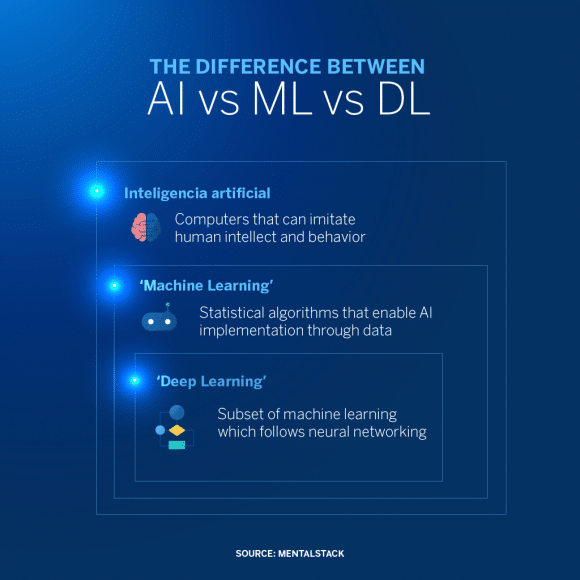

Hva er de fire typene AI-intelligens?
Noen av disse typene AI er ikke engang vitenskapelig mulige akkurat nå. I følge det nåværende klassifiseringssystemet finnes det fire primærskoler AI-typer: reaktiv, begrenset hukommelse, teori om sinn og selvbevisst. (Kilde: Forstå de fire typene kunstig intelligens - bernardmarr.com )
Hva er AI? Lær om kunstig intelligens - en svært omfattende artikkel om AI, av Oracle.com
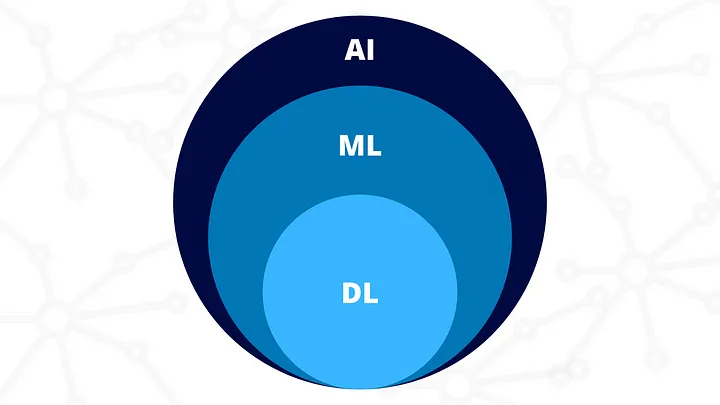
Fordeler og ulemper ved bruk av kunstig intelligens
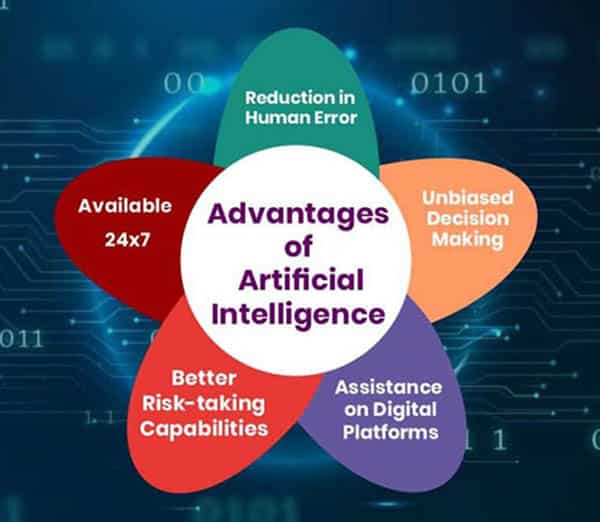
Hva er kunstig intelligens (KI)? (ifølge en AI-app selv 🙂 ... ChatGPT)
Kunstig intelligens (KI) refererer til simulering av menneskelig intelligens i maskiner som er i stand til å utføre oppgaver som vanligvis krever menneskelig intelligens. Disse oppgavene inkluderer ting som læring, resonnering, problemløsning, persepsjon, språkforståelse og til og med beslutningstaking.
AI-systemer er utviklet for å analysere data, gjenkjenne mønstre og ta informerte beslutninger eller forutsigelser basert på disse dataene. De kan trenes til å forbedre ytelsen over tid gjennom iterative læringsprosesser. AI-teknologier er grovt klassifisert i to kategorier: Smal eller svak AI og generell eller sterk AI.
Smal eller svak AI: Denne typen AI er designet og trent for en spesifikk oppgave eller et smalt spekter av oppgaver. Den utmerker seg til å utføre disse oppgavene, ofte overgår den menneskelige evner, men den mangler evnen til å forstå eller utføre oppgaver utenfor sitt forhåndsdefinerte omfang. Eksempler på smal AI inkluderer stemmeassistenter som Siri eller Alexa, bildegjenkjenningssystemer og anbefalingsalgoritmer som brukes av strømmetjenester.
Generell eller sterk AI: Generell KI refererer til et nivå av kunstig intelligens som har evnen til å forstå, lære og anvende kunnskap på tvers av et bredt spekter av oppgaver, omtrent som et menneske. Den ville ha menneskelignende kognitive evner og kunne potensielt utføre enhver intellektuell oppgave som et menneske kan. Generell KI er fortsatt i stor grad teoretisk på dette tidspunktet og er ikke oppnådd.
AI-systemer kan videre kategoriseres i maskinlæring og dyp læring:
Maskinlæring: Det er en delmengde av AI som involverer trening av algoritmer for å lære mønstre fra data og ta forutsigelser eller beslutninger basert på disse dataene. Typer maskinlæring inkluderer veiledet læring (trening med merkede data), uveiledet læring (finne mønstre i umerkede data) og forsterkningslæring (læring gjennom prøving og feiling).
Dyp læring: Dette er en delmengde av maskinlæring som bruker kunstige nevrale nettverk til å modellere og behandle komplekse mønstre og sammenhenger i data. Dyp læring har vært spesielt vellykket i oppgaver som bilde- og talegjenkjenning.
AI har et bredt spekter av bruksområder på tvers av ulike bransjer, inkludert helsevesen, finans, transport, underholdning og mer. Den fortsetter å utvikle seg raskt og har potensial til å revolusjonere hvordan vi lever og jobber, selv om etiske hensyn og potensielle utfordringer også må tas nøye opp etter hvert som AI-teknologien utvikler seg.




Finn alle toppleverandører av marinenavigasjonsprodukter og -tjenester for sikker maritim reiseplanlegging